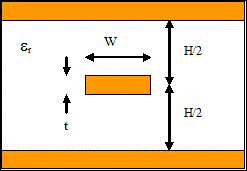Weekend in Penang
 |
| Penang Street Food |
 |
| Penang Street Food |
 |
| More Street Food in Love Lane |
Just completed Day 1 of the course on RF Package
Technology : Principles, Issues and Challenges
What sort of substrates should we be using for RF
packages? There are plenty to choose from. Here are some comparisons:
|
Technology
|
For
|
Against
|
|
Thin Film Ceramics
|
Wide range of substrate materials. Excellent line tolerance of ± 2.5 mm. Smooth high conductivity metals Traditional for high end mm wave applications. Circuits up to 100GHz
Hermetic
|
Expensive. Limited no of layers. Limited resistor ranges
|
|
Thick-Film Ceramics
|
Wide range of substrate materials. Many decades of laser trimmed resistors Hermetic. Lower cost than thin film
|
Poorer line tolerance ± 25 mm compared to thin film. Higher resistivity and roughness of metal layers. Limited no of layers
|
|
High Temperature Co-fired Ceramic (HTCC)
|
More layers than thick or thin film. Hermetic. Cheaper in volume production.
|
Shrinkage issues. Limited range of substrates. Higher resistivity of metal layers. High tooling costs
|
|
Low Temperature Co-fired Ceramic (LTCC)
|
Better conductivity metal lines than HTCC. More layers than thick or thin film. Hermetic. Cheaper in volume production.
|
Shrinkage issues. Limited range of substrates. High tooling costs
|
|
Polymer Laminate
|
Low Cost. Standard SMT technology. Wide range of low permittivity substrates. Supports many metal layers. High conductivity smooth copper traces.
|
Poor linewidth tolerance ± 50 mm. Poor thermal conductivity. Not hermetic. Limited temperature range.
|
Just looking at ceramic substrates there are several to choose from:
|
Substrate
|
Applications
|
Properties
|
|
Alumina eg 99.6 %
|
Low to medium power RF & microwave circuits
|
Permittivity=9.8
Low cost smooth, polished surface for fine lines 25 mm or better
Wide range of applications. Widely available
|
|
Quartz (SiO2)
|
Microwave & millimeter-wave circuits requiring extremely low loss or low
CTE
|
Permittivity=3.8.
Smooth, polished surface for fine lines 25 mm or better. Low loss tangent
|
|
Aluminium Nitride (AlN)
|
High-power RF & Microwave circuits using Silicon or GaAs ICs. Optimal CTE match with Silicon devices
|
Permittivity=8.9
Good thermal conductivity. Good TCE match to Si. Surface finish not as good as alumina or quartz
|
|
Beryllia (BeO)
|
High-power RF & Microwave circuits
|
Permittivity=6.7
Excellent thermal conductivity. Surface finish not as good as alumina or quartz. Dust is toxic.
|
Plymer laminates are popular due to low cots but the most widely sued, FR4 has some shortcoming at high frequency






















